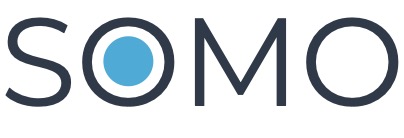Citizen Generated Data (CGD)
1. Emerging Technologies and Methodologies in Data Collection and Analysis
a. Artificial Intelligence (AI)
- Overview: AI can be used to process large datasets, recognize patterns, and make predictions, which can enhance data-driven decision-making in CGD projects.
- Applications in CGD:
- Predictive Analytics: AI can forecast community trends, such as health outbreaks or environmental changes, allowing for proactive interventions.
- Natural Language Processing (NLP): AI can analyze community feedback from social media, surveys, and interviews to identify common themes or sentiments.
- Automation: AI can automate repetitive data collection or analysis tasks, improving efficiency.
- Challenges:
- Data Privacy: Using AI involves collecting large amounts of data, raising concerns about how data is stored and used.
- Access to Technology: Many communities may lack the infrastructure to fully leverage AI technologies.
b. Machine Learning (ML)
- Overview: Machine learning is a subset of AI that allows computers to learn from data and improve over time without explicit programming.
- Applications in CGD:
- Pattern Recognition: ML can identify trends in community development data, such as economic indicators, public health data, or environmental conditions.
- Custom Models: ML can be trained to predict specific outcomes in CGD projects, such as the impact of a new policy or intervention.
- Real-Time Decision Making: ML models can analyze data in real-time, allowing for quicker responses to emerging community needs.
- Challenges:
- Data Quality: ML models rely on high-quality, well-structured data. If data is incomplete or biased, the outcomes may be inaccurate.
- Ethical Concerns: Transparency and fairness must be ensured when using ML to make decisions that affect communities.
c. Participatory Mapping
- Overview: Participatory mapping involves community members actively contributing to the creation of maps, often using tools like Geographic Information Systems (GIS).
- Applications in CGD:
- Community-Led Mapping: Residents can map assets (e.g., resources, infrastructure) and challenges (e.g., areas prone to flooding) to better inform project planning.
- Crisis Response: In areas affected by natural disasters or humanitarian crises, participatory mapping can help identify needs and coordinate relief efforts.
- Land Use Planning: Community members can use mapping to propose changes in land use, ensuring development is more inclusive and sustainable.
- Challenges:
- Technical Barriers: Participatory mapping often requires specialized tools (e.g., GIS) and training.
- Inclusivity: Ensuring all voices are represented in mapping, especially marginalized or underrepresented groups, can be difficult.
2. The Evolving Landscape of Community Engagement and Participation in CGD Projects
a. Increased Use of Digital Platforms
- Overview: With increased access to the internet and smartphones, communities can engage digitally through platforms like social media, mobile apps, and online forums.
- Benefits:
- Broader Reach: Digital tools allow more community members to participate, including those who may not attend physical meetings.
- Real-Time Feedback: Community members can quickly provide feedback on projects through surveys, apps, or social media channels.
- Data Collection: Mobile platforms can help gather data, enabling real-time monitoring and community input.
- Challenges:
- Digital Divide: Not all community members have access to the internet or digital devices, especially in rural or underserved areas.
- Misinformation: Online platforms can spread misinformation, which could negatively impact CGD initiatives.
b. Participatory Budgeting and Decision-Making
- Overview: Participatory budgeting involves giving communities a direct say in how certain portions of the budget are allocated, promoting transparency and inclusion.
- Benefits:
- Empowerment: Community members are directly involved in decision-making processes, fostering a sense of ownership over projects.
- Better Resource Allocation: Funds are more likely to be allocated to areas that matter most to the community.
- Challenges:
- Coordination: Facilitating participatory processes can be complex, especially in large or diverse communities.
- Sustainability: Keeping the community engaged over time can be challenging, particularly after initial enthusiasm wanes.
c. Co-Design and Co-Creation
- Overview: Community members actively collaborate with professionals to design and implement CGD projects.
- Benefits:
- Tailored Solutions: Co-design ensures that projects are highly relevant to local needs and contexts.
- Increased Buy-In: Communities are more likely to support and sustain projects they helped create.
- Challenges:
- Time-Intensive: Co-design requires more time and resources than top-down approaches.
- Balancing Expertise: Balancing community input with technical expertise can sometimes lead to tension.
3. Strategies for Staying Informed About Trends and Fostering Innovation
a. Networking and Collaboration with Other Organizations
- Importance: Building networks with other CGD organizations can help stay updated on emerging trends, exchange ideas, and collaborate on projects.
- Methods:
- Joining Professional Networks: Participate in associations, working groups, and conferences focused on CGD.
- Collaborative Projects: Engage in joint initiatives with other organizations to pool resources and knowledge.
- Peer Learning: Establish regular forums or peer exchanges to share best practices and innovations.
b. Keeping Abreast of Trends
- Importance: Being aware of emerging trends allows organizations to innovate and adopt new approaches before they become mainstream.
- Resources:
- Academic Journals and Reports: Subscribe to journals and newsletters that focus on community development, data science, and technology.
- Social Media: Follow key influencers, organizations, and experts in CGD, technology, and community engagement.
- Conferences and Workshops: Attend events that focus on emerging technologies, methodologies, and best practices in CGD.
c. Fostering a Culture of Innovation
-
- Overview: Organizations need to build internal cultures that embrace change, experimentation, and continuous learning.
- Strategies:
- Encouraging Experimentation: Create space for staff to test new approaches or tools without fear of failure.
- Cross-Disciplinary Collaboration: Encourage collaboration across departments and disciplines to foster creative thinking.
- Continuous Learning: Provide opportunities for ongoing training and development, ensuring staff stay up-to-date with trends and technologies.
Last modified: Friday, 20 September 2024, 4:27 PM


